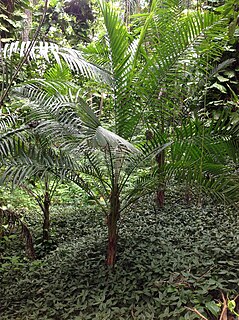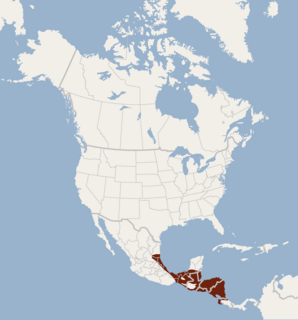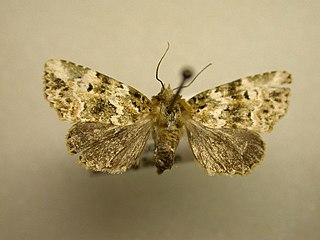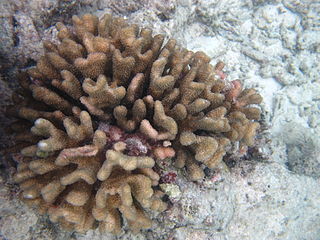
Tabernaemontana is a genus of flowering plants in the family Apocynaceae. It has a pan-tropical distribution, found in Asia, Africa, Australia, North America, South America, and a wide assortment of oceanic islands. These plants are evergreen shrubs and small trees growing to 1–15 m tall. The leaves are opposite, 3–25 cm long, with milky sap; hence it is one of the diverse plant genera commonly called "milkwood". The flowers are fragrant, white, 1–5 cm in diameter.

The Wildlife of Costa Rica comprises all naturally occurring animals, fungi and plants that reside in this Central American country. Costa Rica supports an enormous variety of wildlife, due in large part to its geographic position between the North and South American continents, its neotropical climate, and its wide variety of habitats. Costa Rica is home to more than 500,000 species, which represents nearly 5% of the total species estimated worldwide, making Costa Rica one of the 20 countries with the highest biodiversity in the world. Of these 500,000 species, a little more than 300,000 are insects.

Reinhardtia is a genus in the palm family native to the northern Neotropics. It is a primarily Central American genus with five species distributed between southern Mexico and the extreme north of Colombia, and one isolated species, Reinhardtia paiewonskiana in the southwest of the Dominican Republic.
Galipea is a genus of plant in family Rutaceae.
Chrysopilus elegans is a snipe fly species in the genus Chrysopilus found from Costa Rica to Peru.
Ceraeochrysa elegans is a green lacewing species in the genus Ceraeochrysa. It is found in Costa Rica.
Cacozelia is a genus of snout moths. It was described by Augustus Radcliffe Grote in 1878 and is known from Venezuela.
Cacozelia basiochrealis, the yellow-based cacozelia, is a species of snout moth in the genus Cacozelia. It was described by Augustus Radcliffe Grote in 1878. It is found in the southern part of the United States.
Cacozelia interruptella is a species of snout moth in the genus Cacozelia. It is found in North America, including Arizona and Florida.
Cacozelia pemphusalis is a species of snout moth in the genus Cacozelia. It was described by Herbert Druce in 1899. It is found in the southern part of the United States, including Arizona.

The elegant myotis is a species of vesper bat. It is found in Belize, Costa Rica, El Salvador, Guatemala, Honduras, Mexico, and Nicaragua.
Pheia elegans is a moth in the subfamily Arctiinae. It was described by Herbert Druce in 1884. It is found in Mexico, Guatemala, Panama, Costa Rica and Venezuela.
C. elegans most commonly refers to the model round worm Caenorhabditis elegans. It may also refer to any of the species below. They are listed, first in taxonomic order and, second, alphabetically.
Diaphania elegans is a moth in the family Crambidae. It was described by Heinrich Benno Möschler in 1890. It is found in Puerto Rico, Hispaniola, Jamaica, Cuba, Costa Rica, Panama, Guatemala, Honduras, Mexico and southern Texas. It is also found in South America, where it has been recorded from Venezuela, Trinidad, Ecuador, Peru, Brazil, Paraguay and Argentina.

Chytonix elegans is a species of moth of the family Noctuidae found in Costa Rica. The species was described by Schaus in 1911.
Cobalopsis miaba, the miaba skipper, is a species of skippers in the family Hesperiidae. It is found from Costa Rica to southern Brazil and Paraguay.

Pocillopora elegans is a species of colonial stony coral in the family Pocilloporidae. It is native to tropical and subtropical parts of the western, central and eastern Pacific Ocean. It is susceptible to bleaching and various coral diseases and the International Union for Conservation of Nature (IUCN) has listed it as a "vulnerable species".
Katissa elegans is a species of spiders in the family Anyphaenidae. It was described from Costa Rica.

Hippeastrum elegans is a species of flowering plants. It is found in South America, from Costa Rica to Brazil.
Lusterala is a monotypic, neotropical genus of tortix moths provisionally assigned to tribe Grapholitini of subfamily Olethreutinae, with Lusterala phaseolana as sole species. Genus and species were both described in 2007 by John Wesley Brown and Kenji Nishida. The holotype is conserved at the National Museum of Natural History in Washington, DC.






